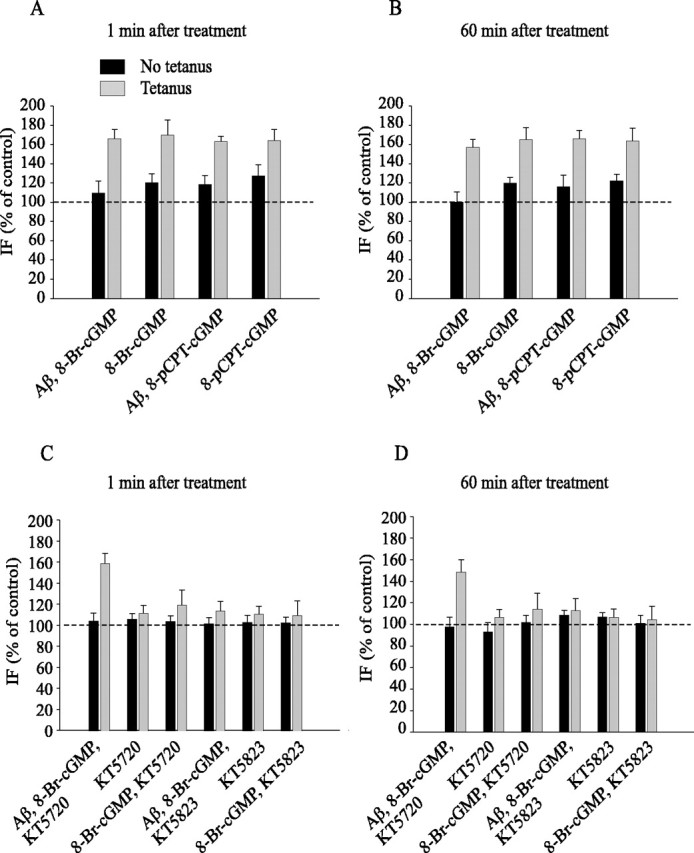Figure 6.

cGK activation protects against Aβ suppression of enhancement of CREB phosphorylation during LTP. A, The cGMP analogs 8-Br-cGMP and 8-pCPT-cGMP reestablish normal increase of CREB phosphorylation in slices that are treated with Aβ plus tetanus at both 1 min (A) and 60 min (B) after tetanus (F(1, 14) = 141.50, p < 0.001 in slices treated with 8-Br-cGMP plus Aβ plus tetanus compared with slices treated with Aβ plus tetanus; F(1, 12) = 96.98, p < 0.001 in slices treated with 8-pCPT-cGMP plus Aβ plus tetanus compared with slices treated with Aβ plus tetanus). C, The protection against suppression of CREB phosphorylation by cGMP analogs is not reversed by inhibiting cAK activity with KT5720 at 1 and 60 min (D) after the tetanus (F(1, 12) = 3.58; p > 0.05, compared with tetanized slices perfused with 8-Br-cGMP plus Aβ). KT5720 is still capable of reducing tetanus-induced CREB phosphorylation (F(1,12) = 266.39; p < 0.001, compared with tetanized slices perfused with vehicle). Tetanus-induced immunofluorescence is still low after treatment with KT5720 paired with 8-Br-cGMP (F(1, 8) = 3.17; p > 0.1, compared with vehicle).Similar to the electrophysiological experiments, the increase in phospho-CREB is reduced when the cGK inhibitor KT5823 (2 μm) is added to the slices treated with Aβ and 8-Br-cGMP before tetanization (F(1, 10) = 79.89; p < 0.001, compared with slices treated with Aβ plus 8-Br-cGMP). KT5823 treatment in the absence of Aβ and 8-Br-cGMP is capable of reducing tetanus-induced CREB phosphorylation (F(1, 12) = 209.61; p < 0.001, compared with vehicle plus tetanus). IF, Immunofluorescence. Error bars represent SEM.
